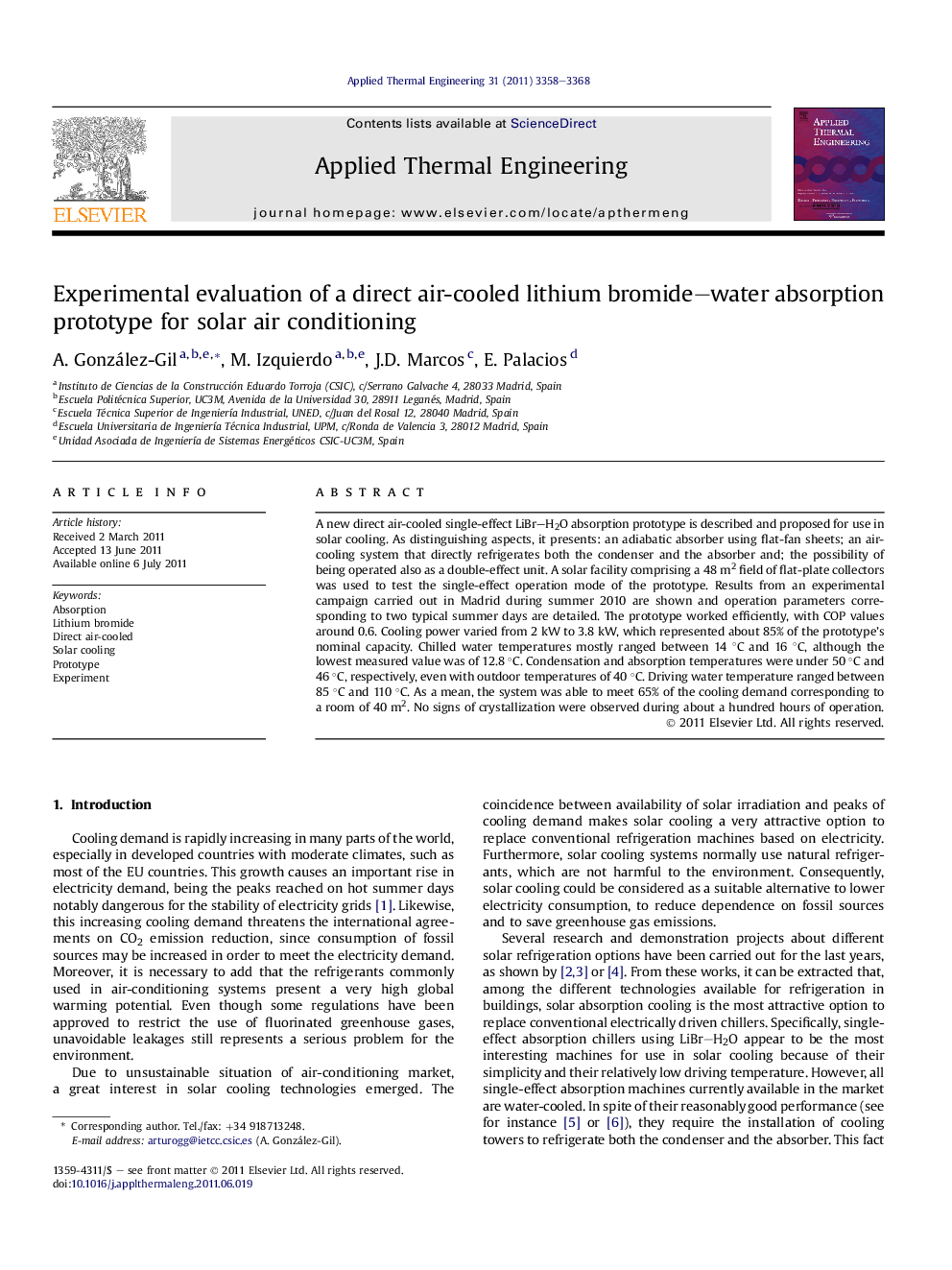| Article ID | Journal | Published Year | Pages | File Type |
|---|---|---|---|---|
| 647674 | Applied Thermal Engineering | 2011 | 11 Pages |
A new direct air-cooled single-effect LiBr–H2O absorption prototype is described and proposed for use in solar cooling. As distinguishing aspects, it presents: an adiabatic absorber using flat-fan sheets; an air-cooling system that directly refrigerates both the condenser and the absorber and; the possibility of being operated also as a double-effect unit. A solar facility comprising a 48 m2 field of flat-plate collectors was used to test the single-effect operation mode of the prototype. Results from an experimental campaign carried out in Madrid during summer 2010 are shown and operation parameters corresponding to two typical summer days are detailed. The prototype worked efficiently, with COP values around 0.6. Cooling power varied from 2 kW to 3.8 kW, which represented about 85% of the prototype’s nominal capacity. Chilled water temperatures mostly ranged between 14 °C and 16 °C, although the lowest measured value was of 12.8 °C. Condensation and absorption temperatures were under 50 °C and 46 °C, respectively, even with outdoor temperatures of 40 °C. Driving water temperature ranged between 85 °C and 110 °C. As a mean, the system was able to meet 65% of the cooling demand corresponding to a room of 40 m2. No signs of crystallization were observed during about a hundred hours of operation.
► A novel direct air-cooled single-effect absorption prototype is described. ► Feasibility of air-cooled technology for LiBr–H2O absorption cooling is proved. ► An adiabatic absorber using flat-fan sheets avoids crystallization of the solution. ► A field of flat-plate collectors powers the chiller at temperatures from 85 to 110 °C. ► The prototype works with thermal COP about 0.6.
